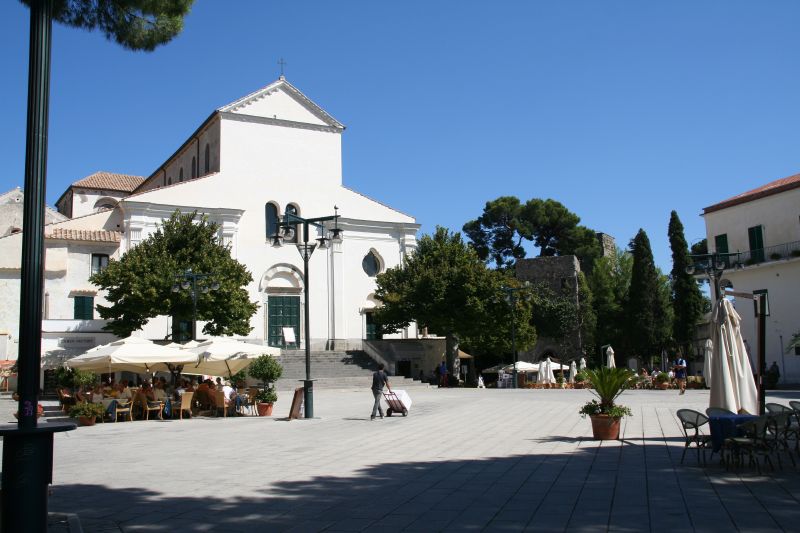The Borgo of Centola
Perched high on its hill, Centola overlooks the surrounding valleys and the rivers of the Lambro and the Mingardo as they wind their way to the sea.
The houses gaze out at the panorama, the intense blue of the sea emerging through the olive groves that frame the coast of Palinura. The silver green of the olive trees harmonizes with the rocky cliffs descending to brilliant turquoise bays, where the secret beauty of Palinura lies submerged in the crystalline waters, full of marvelous caves and tunnels to explore.
No one arrives in Centola by chance. You arrive with the desire to discover what cannot be seen, following the twisting inclines and declines of trails climbing up to the ghost city of San Severino, and back down toward the marvels hidden in the deepest sea.
Centola’s origins are linked to an important historical event that affected the entire Italian peninsula. After the fall of the Western Roman Empire, Italy, and Southern Italy in particular, was besieged by the Ostrogoths. The Emperor Justinian sent his forces to restore order to the territory under General Bellisario, who in his fervor to drive away the invaders, had no qualms about attacking and destroying cities and villages. One of these villages was Molpa, from which many were able to escape. Some one hundred exiles reached the slopes of Mount Fontanella, and in this safe and sheltered place, ‘Centula’ was founded.
During the period of the Lombard domination, Centola was became the site of a development that involved every sector in the community: the construction of the Abbey of Santa Maria degli Angeli,
built as a spiritual retreat between 515 and 530 by the Basilian monks, and which today no longer exists.
This religious order followed the teachings of Saint Basil, which sought to create a perfect union between prayer and labor. For this reason, a complex of buildings were built around the Abbey, including an orphanage, a retirement home, a mill, an olive mill, a library, and an olive grove was planted.
In 1250, under the tutelage of the Swabian Empire, Centola was deemed a Universitas, defined as an autonomous community, with its own statute, a ‘sindicus’, or mayor, elected by the citizens, and a judge.
Between 1550 and 1600, danger and terror came to Centola by sea, when the borgo and nearby villages of Palinuro and La Molpa were repeatedly attacked and looted by the merciless Saracen Turks.
After this period, documentation about Centola becomes increasingly more rare and fragmented until many centuries later, in 1828, at the height of the Italian Risorgimento movement. On the night of the 27th of June, the inhabitants of Centola attempted to assault the City Armory, with the objective of disarming it and taking possession of the armory.
Unfortunately for them, a spy forewarned their attack, and when the rebels reached their target, they found only a few rifles and some gun powder that had gone bad. The people did not give up however. They marched to the Piazza of Palinuro, where the “Proclamation of Palinuro” was read, which clamored for a constitutional charter guaranteeing freedom and social justice.
King Francesco I of the Bourbons responded to their demands by imposing a violent repression that put an end to the revolt.
The Church of San Nicola di Mira
The most important church in Centola is San Nicola di Mira which faces a little public square where all the streets of the borgo converge.
An inscription on the main entrance gives the date of consecration as August 15, 1617. In accordance with the dictates of Catholic Counter- Reformation, the church was constructed in full Baroque style.
The interior is in a single nave layout, richly decorated with marble altars, paintings and statues. A polychrome marble niche behind the main altar holds the statue of San Nicola di Mira.
This church has a tormented history and has been closed numerous times due to structural problems requiring extensive restoration. The last intervention may have finally been conclusive, after exhaustive research that seems to have resolved the structural issues.
The church was reopened for worship in 2014, and the parishioners discovered that the interior space had been reduced and that the facade had been reconstructed, thanks to new techniques and lighter materials.
Capo Palinuro
Capo Palinuro is a corner of paradise located just a few kilometers from Centola. The spectacular landscape of coastal cliffs plunging to a crystal clear turquoise sea hides a deeper, secret beauty, because Capo Palinura is full inlets and marvelous underwater caves. This unique geological conformation has created a microclimate that is ideal for extremely rare species of marine life, drawing marine biologists to Capo Palinura from all over the world.
There are thirty-two sea-caves to explore. The “Grotta Azzura”, the Blue Cave, is one of the largest, with tunnels and cavities leading to what is called “la Sala di Neve”, the Snow Room, because of a sulfurous spring that deposits a layer of white, snow-like material on the floor of the cave.
The “Grotta Viola”, the Purple Cave, entered via the bay of the “Cala Fetente”, is so named because of the reverberating reflections of violet light on the walls and under water caused by the presence of manganese in the cave.
Of all the sea-caves, the most spectacular is “La Cattedrale”, the Cathedral. In its largest room there is a window with two openings in the upper part of the cave. Regardless of the exceptional beauty of this cave, it is only recommended for experienced divers, because of a muddy layer at the bottom, which is important not to stir up, as it clouds the water.
Museo delle Testimonianze e della Memoria, The Museum of Testimonies and Memory
The “Museo delle Testimonianze e della Memoria” was founded by the ‘Progetto Centola’ Association, in the desire to create a place to retrace the borgo’s past.
The museum is located inside a former school in via T. Tasso, and is an open diary recounting the historical memory of the borgo, thanks to the contributions of the citizens of Centola, who have filled the museum with objects that had been in their cellars and attics for decades. Antique dishes, suitcases, kitchen utensils and above all work tools have been donated to the community to recount the difficulties, challenges and beauty of traditional rural life.
“A museum as a community hearth”. There is no better way to describe this unique testament to the traditions and culture of Centola.
San Serverino, the Ghost Town.
The distant echoes of the church bells in San Severino call the handful of worshipers who come to this uninhabited hilltop borgo, just to celebrate Mass.
The chimes of the bells are the last heartbeat of the village, which has been abandoned for almost fifty years
San Severino is set on a rocky outcrop, wedged between the Lambro and Mingardo rivers. It is generally thought that the borgo dates back to the 10th century, but the presence of more ancient buildings indicates a settlement dating back to the 7th century.
During this period, a legion of Bulgarian mercenaries arrived in this area, under the command of their prince, who had the task of monitoring the source of the Mingardo river. It was a strategic point, as it was connected to Palinura and its port.
The historical events of this borgo are closely tied to the noble family, San Severino, from the principality of Salerno. Despite the various Kings that dominated this territory and the numerous power struggles boiling throughout the region, the local feudal lords were able to maintain stability in San Severino, which given the times, was no small feat.
By the 15th century San Severino was no longer considered a fundamental strategic point, but the borgo continued to develop thanks to the activity of plaster mining.
The borgo’s ascent was abruptly halted when the San Severino family came into conflict with King Charles V and were forced into exile.
The borgo was left alone and without protection, and was soon fragmented and sold off. It was bought by unscrupulous owners who imposed unreasonable taxation and ruthlessly enforced payment by any means necessary.
As if the situation was not dire enough, in 1624, an epidemic of the plague hit the borgo and decimated the population.
In 1888, the construction of the first railway leading to the valley began a long period of emigration, which slowly drained away the population, culminating fifty years later.
The last inhabitants left San Severino in 1977, it had resisted as long as it could, but it was already a ghost town. In the years that followed, acts of vandalism destroyed whatever had been left in the borgo.
Several years ago, the association “Pro San Severino Medievale” was founded, with the objective of bringing new lifeblood to the borgo.
The panorama from the esplanade of the Ducal castle makes you want to stop the clock and remain there forever, but not even time has been kind to this ancient village, and today, it is difficult to recreate its history. As you climb the steep streets between the cliffs and ravines you find yourself immersed in a still, immobile world. Some of the houses have collapsed, some have no façade, and yet they still exude an irresistible fascination. Even the ancient mother church no longer has a roof, and has been repossessed by trees and bushes.
But hope springs eternal in the chiming of the church bells in San Severino’s new church, which faithfully holds Mass. And while it may appear a bit out of context in this ancient, crumbling village, it is succeeding in the noble task of bringing San Severino back to life.
______________________________________
Do you known of any famous people related to this borgo? Contact us!
The Centenary’s Dish
The typical dish of Centola has a very recent and curious story.
One morning, the mayor of Centola went to visit his grandmother, Grazie, to celebrate her 100th birthday, and to entrust her with the role of mayor for a day.
Surprised and moved, the century-old woman confided a secret that she had kept all through her life, it was what she considered to be her elixir for a long life: a recipe she had invented!
Without knowing it, Grandmother, or ‘Nonna’ Grazie had solved a serious problem that had been nagging the mayor for some time, her dish was perfect to be Centola’s exclusive ‘Typical Recipe of Centola’.
Nonna Grazie’s dish is substantial and above all, healthy, because it follows the guidelines of the Mediterranean diet. This recipe was officially presented in Centola, and was then presented at the International Expo of Milan in 2015.
Ingredients for four people:
- A handful of wild fennel;
- 400 gr of bran cavatelli pasta;
- 200 gr of cherry tomatoes;
- 20 anchovies, deboned;
- 1 clove of garlic;
- 1 tablespoon of extra virgin olive oil;
Fill a pot with water and boil the wild fennel for a few minutes, then drain and set aside. In a frying pan, fry the garlic in the oil then add the tomatoes, chopped into pieces, and cook for a few minutes. Then add the wild fennel and the sardines and cook for another five minutes.
Boil the pasta in lightly salted water. When the pasta is ready, add it to the mixture in the frying pan. Stir everything over the flame for a few minutes, to amalgamate the flavors and ingredients.
Your elixir of longevity is ready to be served!
_________________________________
Do you known other typical recipes related to this borgo? Contact us!

 Italiano
Italiano
 Deutsch
Deutsch





